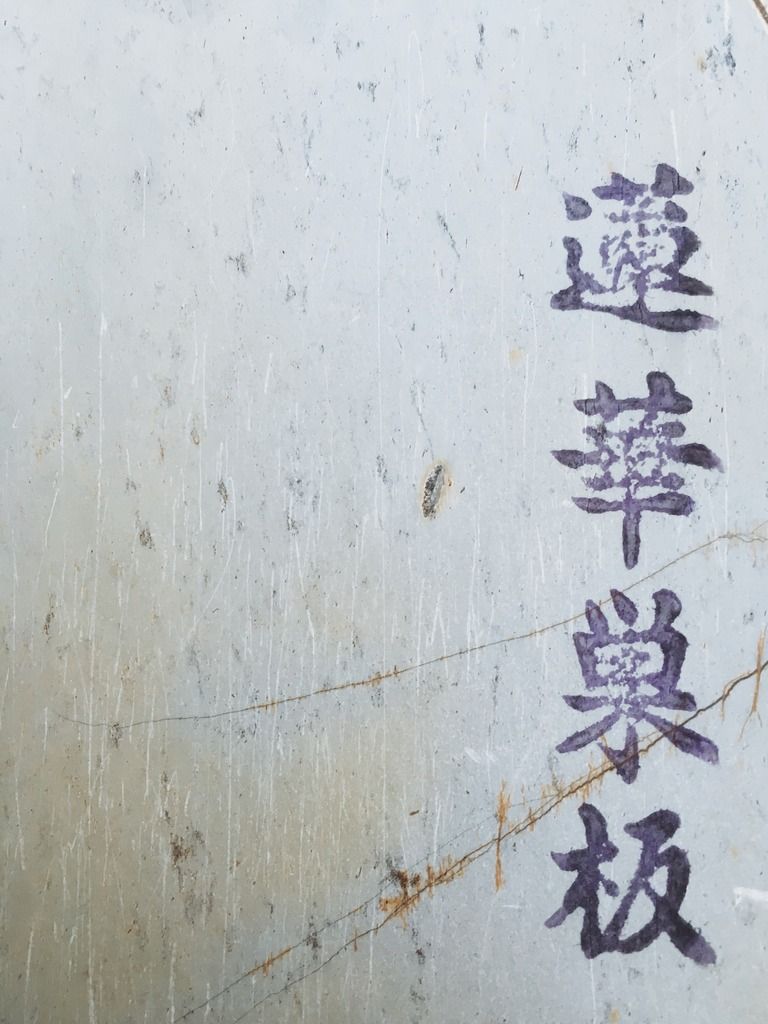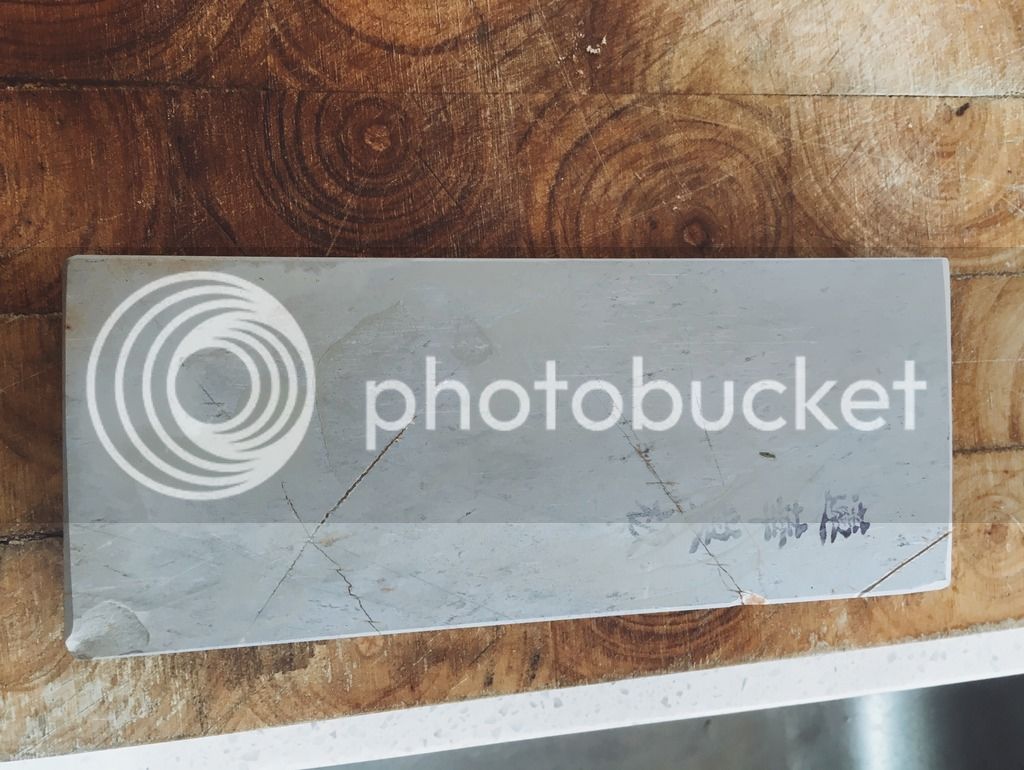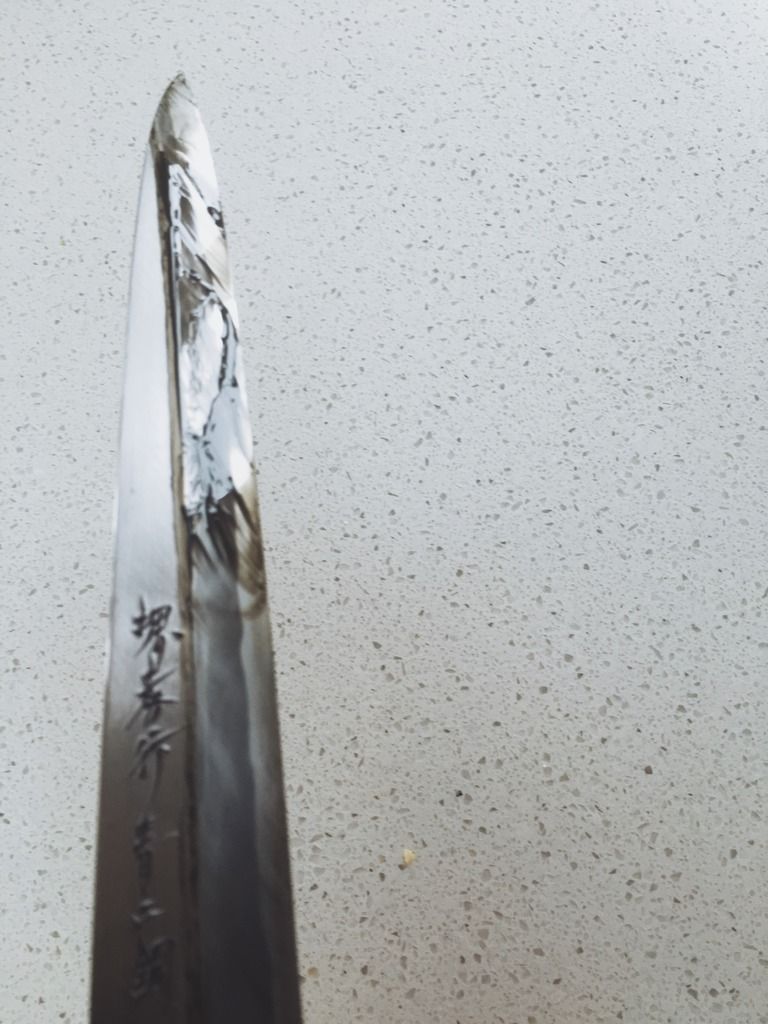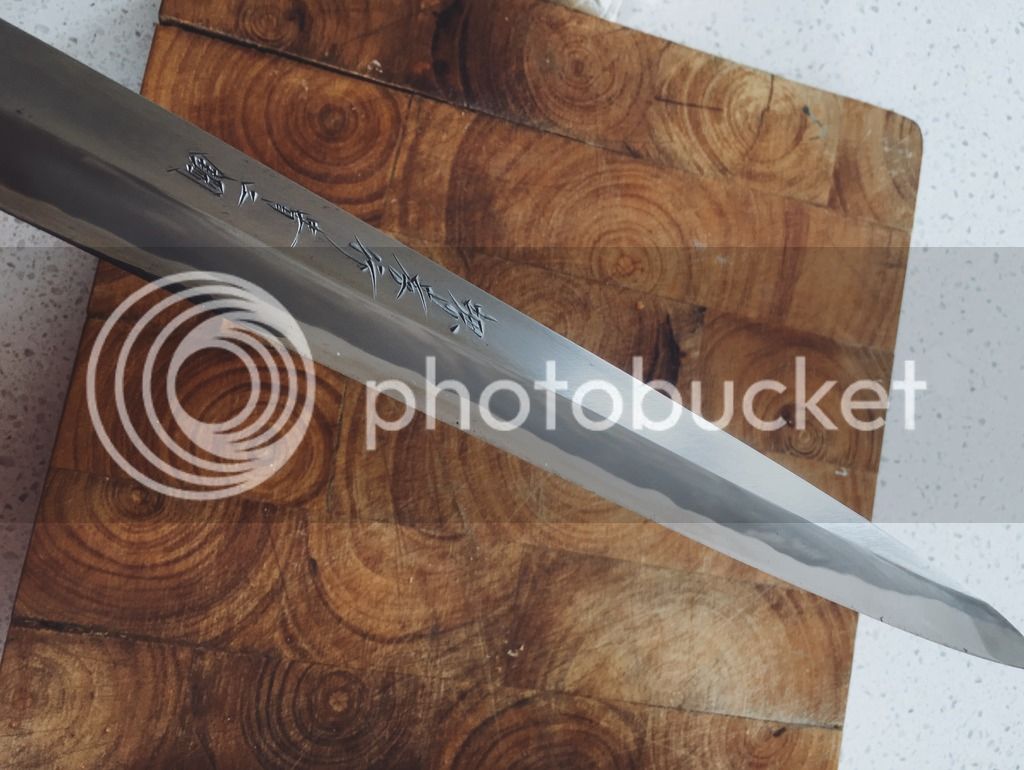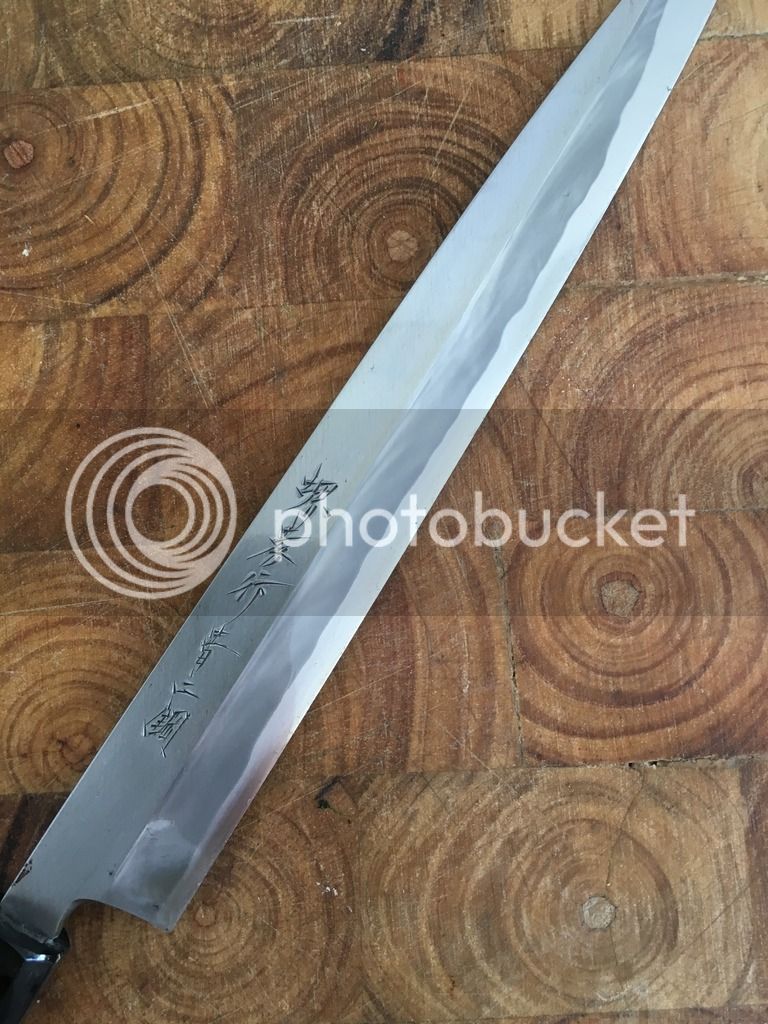I think there's an arc of sharpness-chasing that we go through as novices - Sort of like chasing a high. We want to see how far we can take it and we assume that sharper is better. Naturally, why wouldn't you? We scoff at the advice of people who've been through the 'arc-of-extreme-sharpness' who advise us to dial it down to toothy pre-finisher levels. And then of course we experience the fleeting scary sharpness of super finishers or strops with compounds; we lose feedback on soft ingredients and realise they were probably right all along.
There is a great deal of personal truth for me in that statement...

I reached a peak trying to see how far I could take my edges, using natural razor finishers, high grit synths, ultra-fine stropping compounds, etc. I learned a lot and it was fun, but I began to re-think this direction when I started to realize that my super-refined edges - whilst great push-cutters - actually lost a lot of slicing performance compared to the lower grits. You can really see this when testing your edge by slicing rolled-up paper towels; the higher you go, the more sawing strokes you require to slice all the way through. This mimics what happens on soft, tough skinned fruits and vegetables. Now I'm playing around with various ways to make my edges toothier, and more aggressive, without losing too much of that ability to make a glossy push-cut through a carrot. What razor users call natural 'pre-finishers' are one of the good ways to do that... I'm also realizing that I'm actually quite happy with lower grit edges for a lot of things, and that refining the edge is really just icing on the cake at some level as long as you can de-burr the edge properly. It's interesting how things change, but that 'arc of extreme sharpness' is very real.
Yes, that is a valid point and I will have to see how practical the Nakayama edge is, I will give an update after a few preps. I am not sure if the super stropped edge is the same, perhaps somebody else knows more. This stone was recommended to me by Watanabe for kitchen knives and he uses one himself, so perhaps they are practical. It also depends on the angle, I guess. Mr Horie from the German Japan Messer Shop did tell me once that very fine edges made with natural stones last longer than with Synth. btw I dont think I have reached that crazy level of sharpness, it does shave my arm very clean without resistance but it doesnt split hanging hair. Also, I usually dont strop on leather but on the stones. I read that with natural stones you get much less trouble with burrs.
I will be curious to hear your opinion after you get the chance to play with the Nakayama...
However, in regards to abrasive-loaded strops, the type of edges they create really depends on the abrasive (Shape, hardness, volume, particle spread, etc.) and the medium they are applied to. You can have two different diamond pasted strops at the same grit level (Say, 1-micron; 12-15K JIS.); one will produce a toothier edge than a similar grit Alox synthetic water stone, the other will produce a super-smooth edge. It all depends upon the shape of those abrasives, how much their particle size varies, how your strop material holds onto the abrasive (How deeply it is absorbed, etc.), and how compliant it is. Barring both being able to get very fine, I've yet to find a strop that creates a similar edge character to a natural stone (Barring using natural stone slurry on a stropping medium, but even then the nature of those abrasives are changed by what they are applied to.). Typically, my stropped edges feel more refined and consistent like high-grit synthetic stone edges, but a little less crisp.
In regards to natural stone edges lasting longer than synths, I would agree with Mr. Horie based upon my own experimentation... There are a lot of theories in the woodworking and knife worlds as to why this may be. Of the more logical arguments, some say that silica-based stones work harden the edge since it is a softer cutting media, some say that natural stones of all types leave less stress risers in the steel due to the nature of the abrasive, and some say that natural stones merely leave less of a micro-burr or wire edge that can cause early failure (I would debate this, as both natural and synthetic stones can result in burrs, or clean edges when viewed under a microscope; it just depends upon how much care you take.), but the only one I can conclusively see for myself [under magnification] is that natural stones have a greater variance in particle size/cutting depth than a synthetic stone of similar fineness. This creates a toothier edge than the 'grit' assigned would suggest, so the deeper random teeth left by natural stones continue to slice to some extent after the finer ones have worn down. With man-made stones featuring tighter grit tolerances, once those fine teeth are worn, the edge stops cutting completely.
Regarding burrs on natural stones (J-Nats, Coticule's, etc. Anything that slurries. Ones that don't, like Arkansas, are a whole other matter.), my experience is that they
can have less burr formation than synthetics, but mostly only by virtue of (A) slurry erosion of the apex, and (B) the fact that they typically cut slower than a similar 'grit' synthetic stone. It still pays to go through some de-burring process afterwards to make sure that there isn't some vestigial micro-burr clinging on... Adding some [non-pasted] stropping into your process
might help you to perk your edges up a little bit more after finishing on natural stones; it depends. It typically helps mine.
- Steampunk
